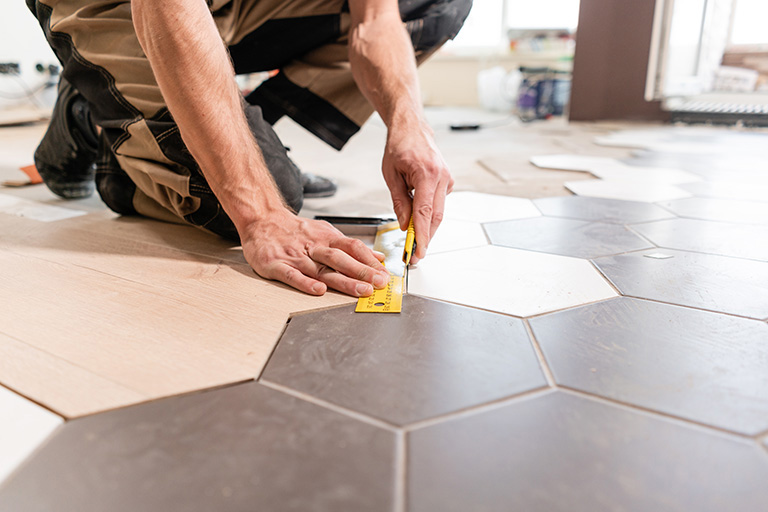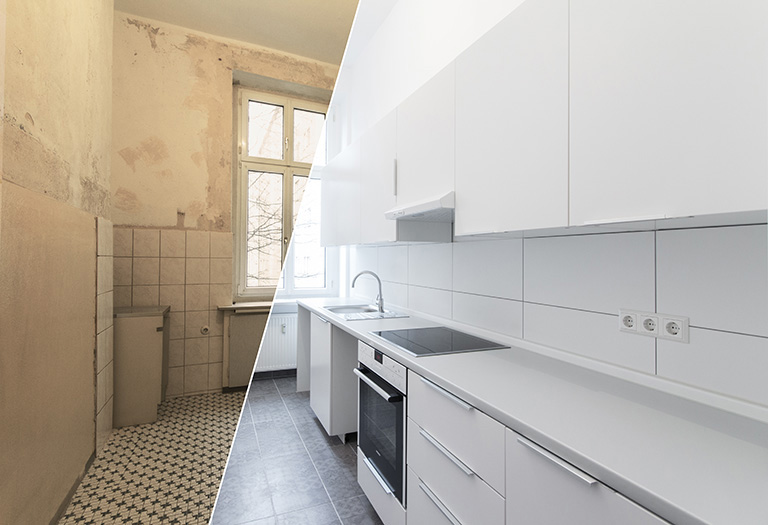#HackIt | Budgeting | Lifestyle | Personal Finance | Article
Hacking Your House: Insider Tips From An Interior Designer
by Sophia | 3 Mar 2020 | 8 mins read

It’s time to stop playing The Sims and do it for real. You’ve got the key to your BTO — now it’s time to do the work and hire an interior designer to make your dream home come to life.
For most of you, it’s probably the first time you’ll have to work with an ID. For others, you might be wondering: Can’t we just DIY and save ourselves the money?
To answer that question — and many more uncertainties you might have — we got in touch with a pair of local IDs (who wanted to stay anonymous) to ask about the ins and outs of the interior design business. To date, they’ve completed around 50 projects for both businesses and residential homes, and have been in the business for four years.
What are the most common misconceptions homeowners have when it comes to approaching interior designers?
People think hiring interior designers is a waste of money. But in reality, an ID provides you with a systematic schedule of the works you want done. This saves you time, effort, and money to manage different contractors on your own.
Is partnering with an ID the most cost-efficient option?
It might not necessarily be the cheapest option, but having an ID will save you a lot of time. So unless you have a lot of time on your hands and you know how to manage multiple parties all at once, going with an ID would be a good choice.
So you would not recommend that people go straight to contractors to manage renovations themselves?
There’s a reason why carpentry or direct contractors are known as such. They’re not trained in design or have a keen eye for your styling needs.
Let’s put it this way. If you’re health-conscious and want a diet curated for your stomach in the long-term, you wouldn’t go to McDonald’s. You’d seek a dietician for recommendations.
What do you think about people who have a strong idea of the design they want, and choose to go to an ID to get designs and drawings — then take those drawings to a contractor?
That only works if you can manage the project properly. However, while most carpenters will still charge you the market rate. The next issue is that there will be no project manager (aka the ID) overlooking the entire project. If an issue crops up that crosses different construction works, the carpenter is not going to be the one to call the electrician or a tiler to fix it. You have to do that yourself.
There is also a misconception that IDs only provide drawings. We don’t simply do that, but will also curate what will look good to match your chosen theme — or your personality.
We’re constantly bombarded with images of homes from clients, and it’s up to us to decide which one to go with — that’s within a budget — so we take the stress of that decision-making process off a client’s hands.
Some people are hesitant to trust IDs because of horror stories and bad experiences, like IDs doing slipshod work or running away with money. How can we safeguard against this?

Referrals always work. It’s really about trust. Also look at the profile of the business, for us, we run a husband-and-wife company, so this is really our bread and butter. We’re not young chaps who want to just make a quick buck from gullible clients — we’re here to stay.
It’s important to know what the company has done (so far), who they have worked with, and who they’ve worked for. If possible, find out the values the company owner upholds.
TSS: It’s good practice to have clear payment terms with your interior designer (or contractor) for that matter, never pay 100% unless the job is satisfactorily completed.
What are some other tips you have?
If you’re dealing with the company salesperson, you’ll probably end up paying more fees. Smaller ID companies, however, will let you work with the owner themselves — so it’s easier to suss out their vibe and the values they bring.
Look out for IDs who don’t know the technical details of the type of work you want them to do, or those who don’t have a lot of knowledge on different materials. Ask about different materials and their pros and cons.
When it comes to carpentry, ask about where they’re getting their wood from (which country).
On materials, premium vs. generic materials or fixtures etc., is there a real difference?
Most branded items from bigger brands generally have better warranties. However, if one doesn’t use the items properly or use them way too much, they will wear and tear just as quickly as generic things.
Is it true that some IDs push certain products such as countertop fixtures, because they have higher margins on certain brands?
I can’t say that all IDs practice such sales tactics. But for us, we will recommend our partner brands not just because of higher margins, but also because of quality, and the guarantee that the after service, if needed, is good too.
If clients are on tight budgets, then we will advise them alternatives that may (or may not) be of similar quality.
Lastly, don’t compromise on quality for the sake of saving a few hundred bucks, because rectification and maintenance works will cost a bomb.
How much are ID markups?
It differs from ID to ID. Some of them charge a lump sum, while others charge a percentage of the project sum. Others include this markup inside already marked up items.
How does that work, markup inside already marked up items?
Actually, most IDs give competitive rates or market rates because they already get preferential discounts from their trusted contractors. IDs already have access to supplier prices, like in any other B2B industry.
It would be unfair to say IDs mark up their prices a lot. For example, if you go to a direct supplier or contractor and they charge you $10, it isn’t that much different from going through an ID. An ID will go to the same direct supplier who will charge him $8. The ID will mark his prices up by 25%, but clients like you will still pay $10 — but this markup includes the time the ID spends liaising and project management fees.
For couples who don’t want to break the bank, what would you recommend in terms of styles and designs for a new home?
Contrary to popular belief — minimalist designs aren’t cheap.
But in general, some good ideas would be to go for vinyl flooring, and less tile works for the house. It’ll help to keep the cost down. Also, buy fans with lights – they double up both in function and design.
Let’s say a couple really wants to save money, and can’t completely renovate the whole place yet. What are the essential things they should work on first with the ID?
Then they should focus on crucial needs first and work on areas they want to change. You don’t necessarily have to make home renovation a one-time thing if you don’t have enough funds. That’s where home stylists like us come in!
But you shouldn’t save in some areas — especially your plumbing.
Have you ever taken up a project that you thought was a bad idea (or done in bad taste, like strange custom works)?
Usually, when the clients have some weird ideas in mind, it is our role as interior designers or contractors to advise otherwise, whether it’s about design choice or functionality.
I’ve had to come in and save a couple of homeowners who chose to DIY without an ID at first. They ended up with finishings and builds that were not well thought of or even practical — we had to redo everything from scratch.
It was a lot of money wasted.

Final question: How can one haggle with an ID?
I always tell my clients that you can choose to buy cheap stuff — but don’t be cheap. When you haggle and negotiate down on price, you make people less motivated to work for you.
But if you want a low price, find smaller IDs. But their experience may not be a lot — but bigger IDs have larger overheads but they can be pricey.
Ready to get your BTO flat designed and renovated? Take these tips and pieces of advice and go forth with the interior designer of your choosing, and get to work on your Instagram-worthy dream home!
And remember: don’t scrimp on plumbing, whatever you do. Otherwise, it’ll be a crappy time.
















